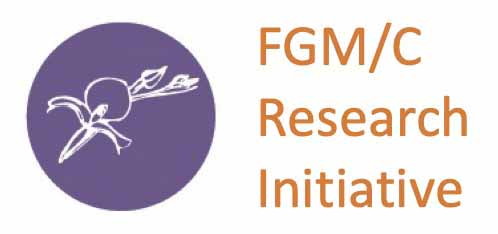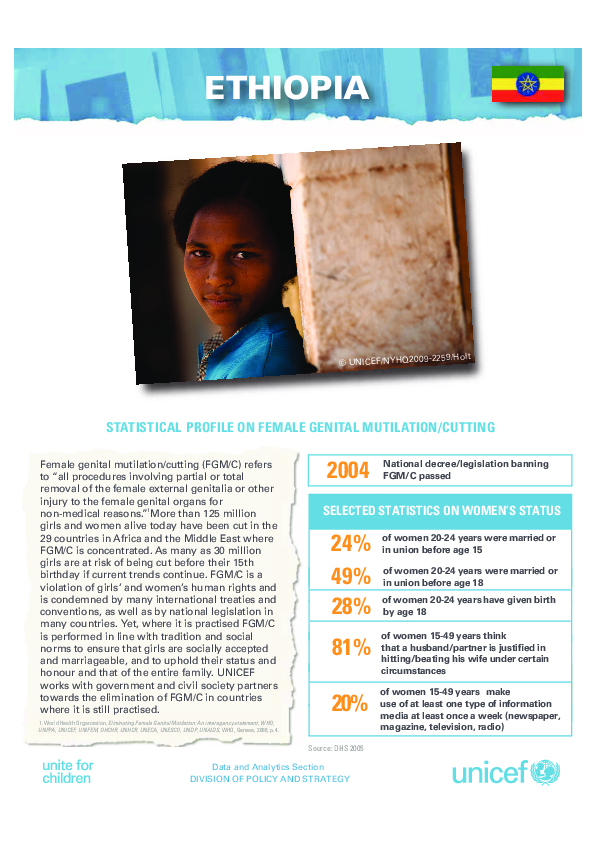Home | Research & Resources | Ethiopia
Key Findings
The prevalence of FGM/C among women aged 15–49 in Ethiopia is 65.2%.
Prevalence is decreasing, but the population is growing, resulting in an increase in the number of girls at risk.
Geography
The regions with the highest prevalence are in the east
Age
Most cutting is performed before the age of 5, but about a fifth occurs between the ages of 5 and 9
Type
‘Cut, flesh removed’ is the most common type of FGM/C practised
Agent
Almost all FGM/C is carried out by traditional practitioners
Distribution of FGM/C across Ethiopia
FGM/C is practised across all regions, religions and ethnic groups in Ethiopia. FGM/C among women aged 15–49 is more prevalent in the east of the country, and the region with the highest prevalence is Somali, at 98.5%. The lowest prevalence is in Tigray, at 24.2%. It should be noted that small sample sizes were used in many of the regions, and figures therefore may not be accurate. Women who live in rural areas are more likely to be cut (68.4% of women aged 15–49) than women who live in urban areas (53.9%).
The Somali are the ethnic group with the highest prevalence of FGM/C among women aged 15–49, at 98.5%, followed by the Affar at 98.4% (however, once again, the small sample size makes this figure potentially unreliable). The ethnic group with the lowest prevalence is the Tigray, at 23%.
82.2% of Muslim women aged 15-49 have undergone FGM/C, compared to 54.2% of Orthodox women and 65.8% of protestant women.
Trends in FGM/C Prevalence in Ethiopia
Between 2005 and 2016, the overall prevalence for women aged 15–49 fell from 74.3% to 65.2%. Due to the large age-range of women included, however, the overall prevalence alone may not fully reflect the progress that has been made in recent years. Breaking down the most recent data by age group shows that the prevalence for women aged 45–49 is 75.3%, while for the youngest age group this has fallen to 47.1%. Despite the fact that a small proportion of women may be cut after the age of 15, the lower prevalences among younger women suggest that the practice is declining.
FGM/C Legislation in Ethiopia
FGM/C is illegal in Ethiopia. Articles 565 to 570 of The Criminal Code of the Federal Democratic Republic of Ethiopia (2004) contain provisions against the practice.
Development Indicators
Population Growth
122,145,944 (as at December 2022), with a 2.42% growth rate (2023 est.)
Infant Mortality
39.1 per 1,000 births (2020)
Maternal Mortality
401 per 100,000 (2020)
SDG Gender Index
Ranked 125 out of 144 countries, with a score of 49.8 (2022)


_with_population.jpg)
.jpg)
.jpg)
_cover.jpg)
_amharic_cover.jpg)
_cover.jpg)
_amharic_cover.jpg)
.jpg)
_cover.jpg)
_cover.jpg)
_amharic_cover.jpg)
.jpg)
_amharic.png)
